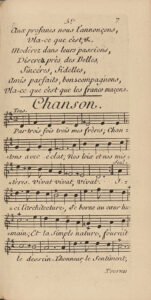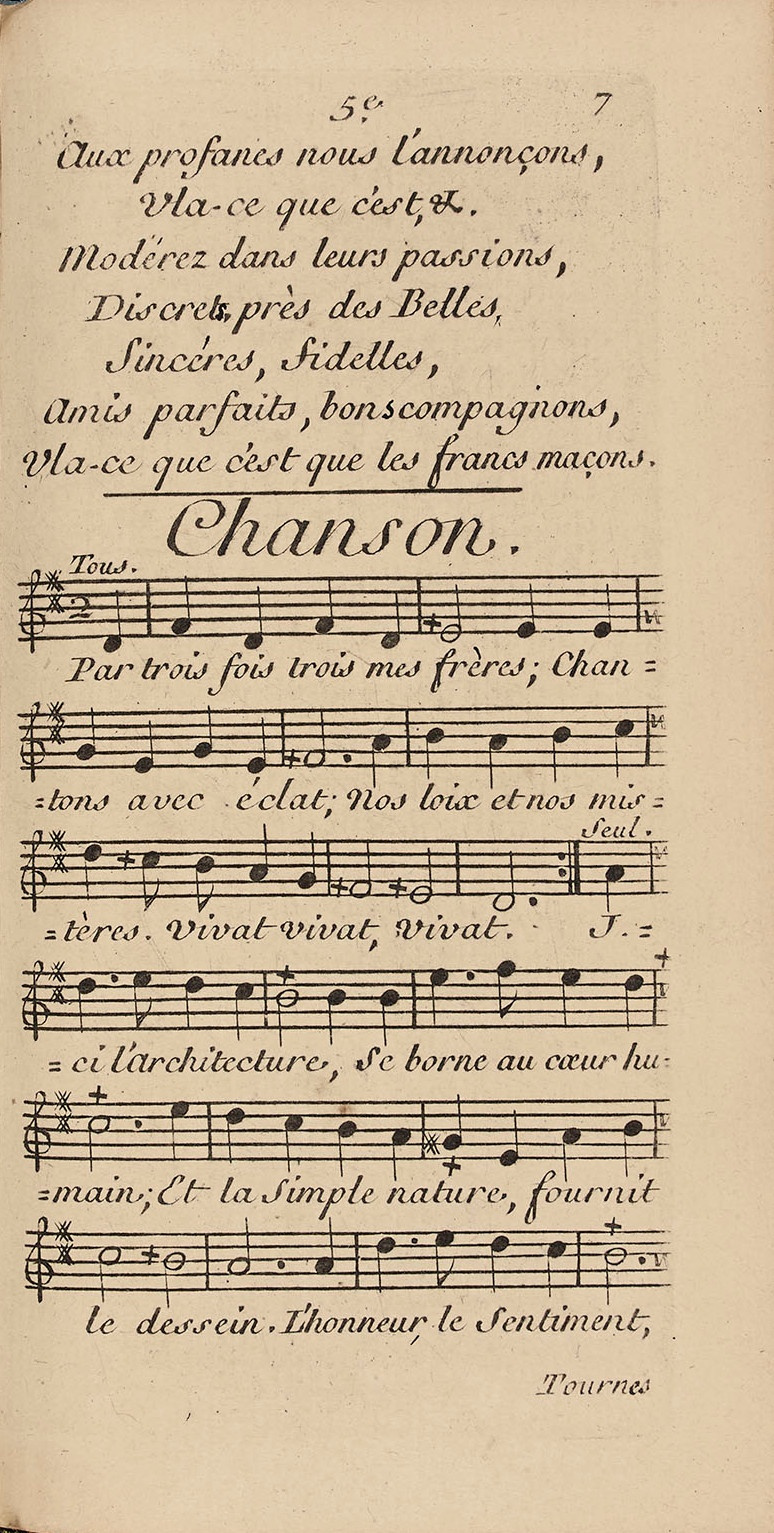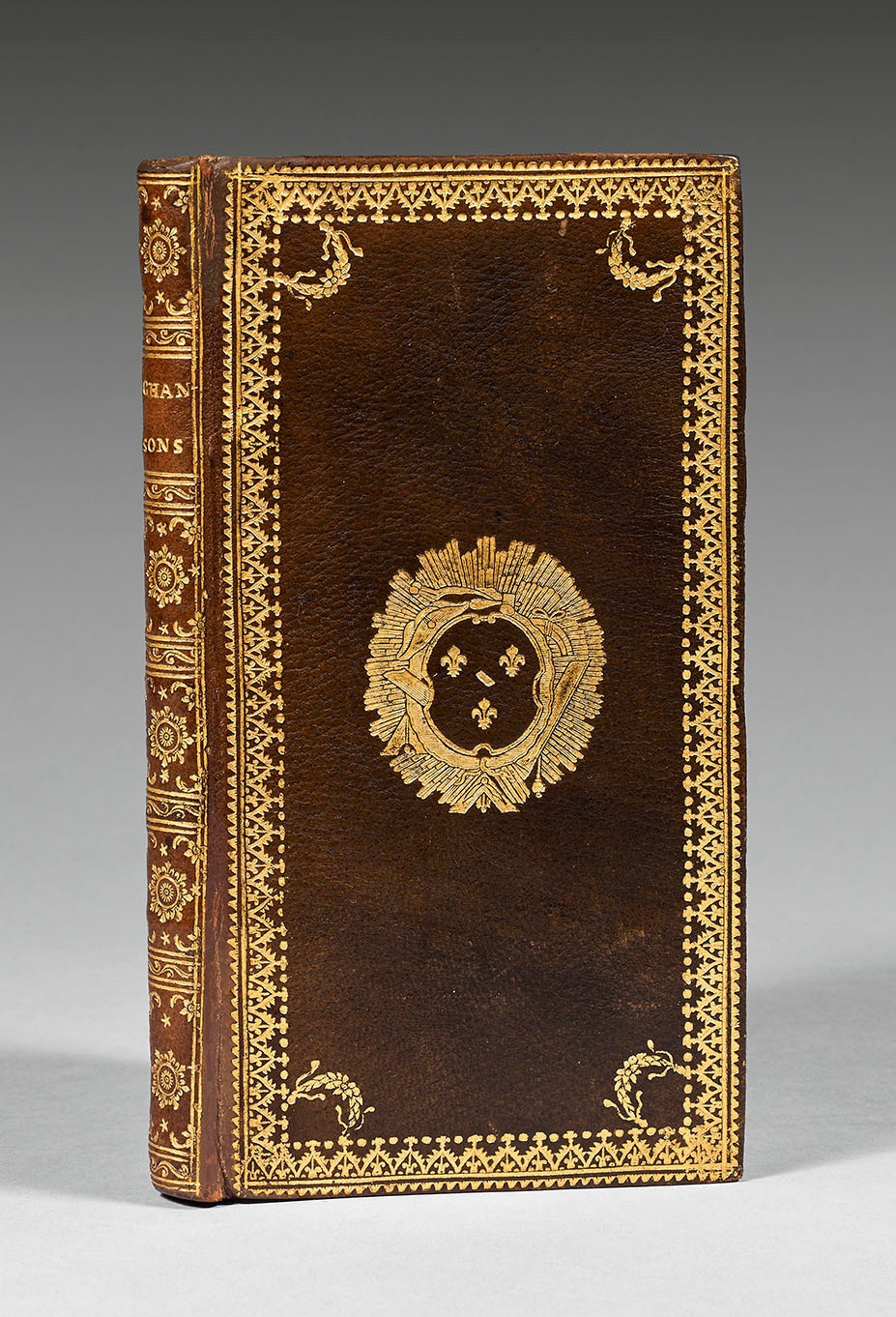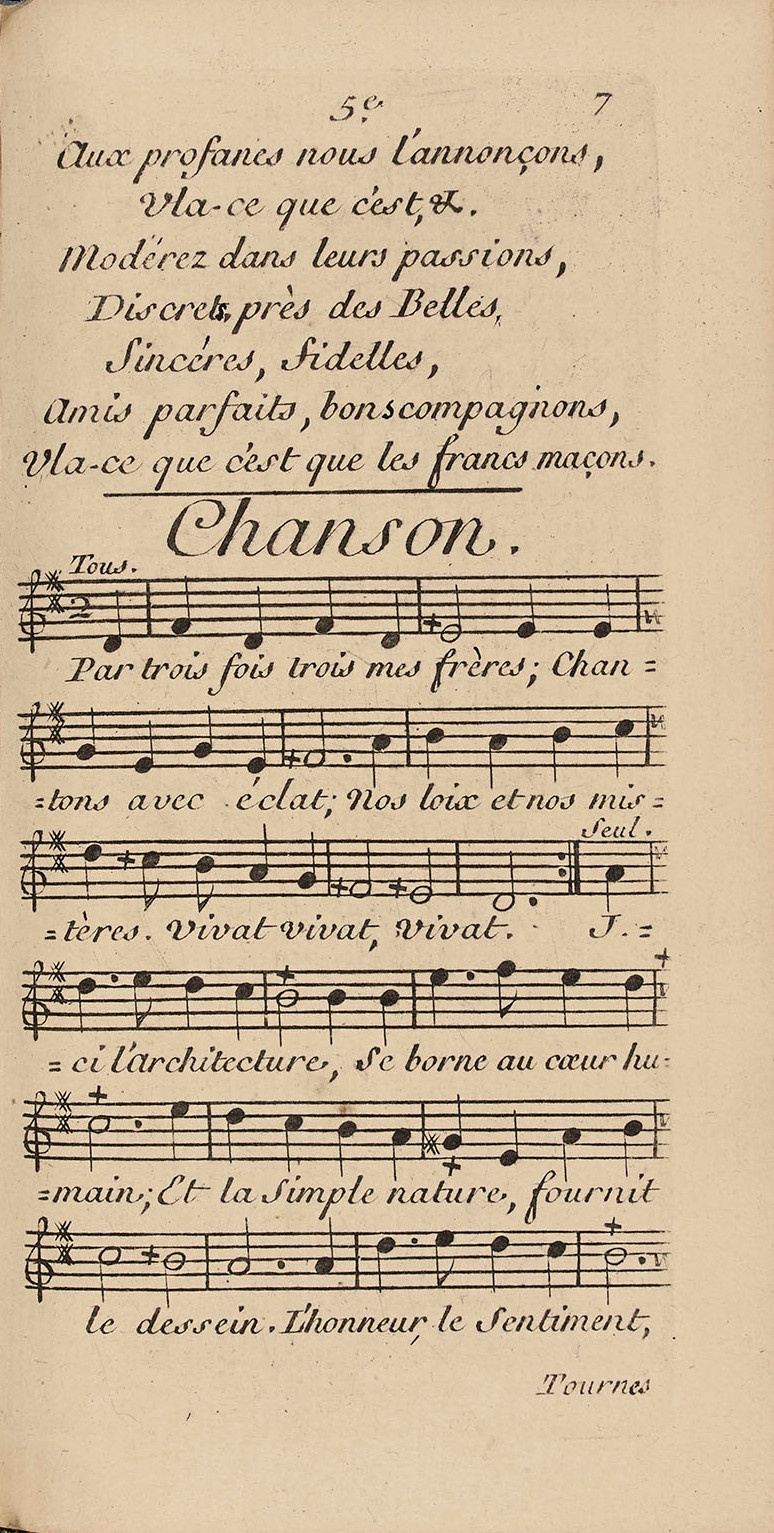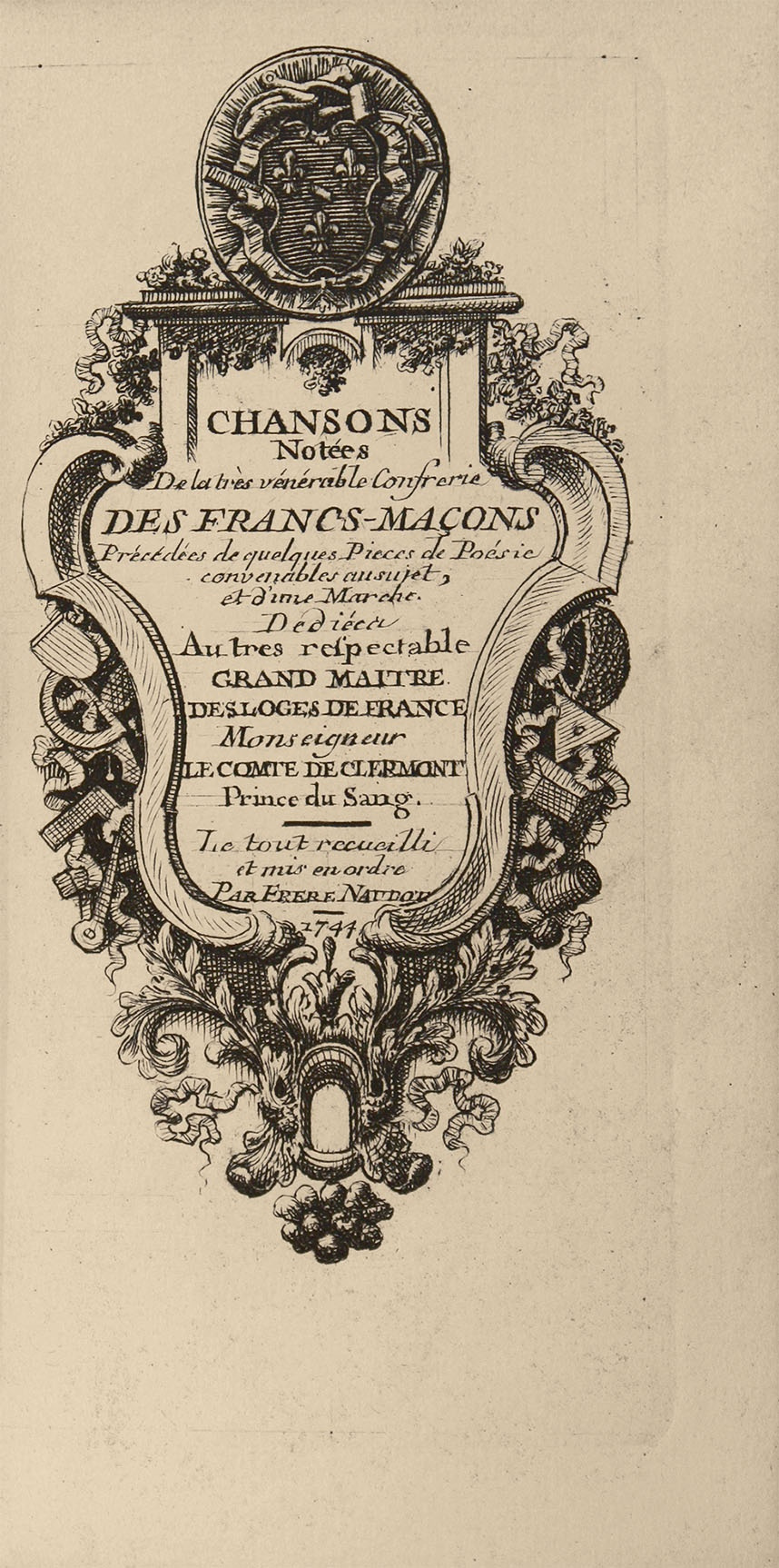Olive green morocco, wide gilt roll-stamp around the covers, garland in the corners, arms in the center, decorated flat spine, gilt cuts, doublures and endpapers in yellow watered silk, gilt edges. Contemporary binding. Case.
178 x 90 mm.
« The dedication copy for the Comte de Clermont, one of the most eccentric personages of the Ancien Regime: destined at the age of nine for the church and endowed with enormously rich benefices, he took up a military career without renouncing these, became nominal commander-in-chief of the French armies, but was relieved of his command after a disastrous campaign against the Prussians in 1758. He had literary ambitions, maintained a kind of salon and engineered his election to the Académie which gave rise to much ridicule. In 1744 he was made Grand Master of the French Free Masons, but soon abandoned this dignity to his dancing master Lacorne (Dict. de Biogr. franç.). He amassed a not inconsiderable library (sold by Prault in 1771) employing no less than five different versions of his arms on his bindings ; that on the above binding is reproduced by Olivier, Hermal (pl. 2633, No. 2) from it. – The British Union Catalogue of Early Music identifies the author with Jên-Jacques Naudot, a flute virtuoso who published several compositions for that instrument, although Eitner (VII, 151) doubts their identity. The Hirsch copy (III, 952) also with Clermont’s arms, lacks the last 8pp. of part II. – A delightful volume.” (Martin Breslauer)
First edition of this collection thus constituted.
Bulletin Morgand et Fatout, 4266.
It was in 1737 that was published the first edition of the collection ‘Chansons notées de la très vénérable Confrérie des Francs Maçons, précédées de quelques pièces de poésie convenables au sujet et d’une Marche, le tout recueilli et mis en ordre par Frère Naudot’.
Superb collection entirely engraved, text and music, on large Holland paper.
The catalogue of the Union Britannique de la musique identifies the author as Jên-Jacques Naudot, a flute virtuoso who published various compositions for this instrument, although Eitner (VII, 151) doubted his identity.
A certain amount of his songs are the transposition of the ones from the Constitutions d’Anderson, with either arranged or original tunes.
The answer to the question of whether these tunes were composed by Naudot, by Lansa, or even by others, does not seem to have been solved yet. In fact, Lansa published around 1744 the Chansons originaires des Francs-Maçons, claiming in the preface the authority of the music and of the texts.
After all, Naudot does not claim to have done anything else but to collect and put in order the songs he publishes – except for the Marche, for the matter the only sheet music he signs with his name.
In any case, we were able to identify that among the songs of the collection, some use pre-existing tunes.
A bêutiful dedication copy bêring the arms of Louis de Bourbon, count of Clermont (1709-1771), placed in a support bêring masonic emblems. The count of Clermont was one of the most eccentric characters under the Old Régime.
Originally destined for a military career since he was 9 yêrs old, without surrendering his property, he becomes Commander in Chief of the French Army, but he was dismissed of his command after a disastrous campaign against the Prussians in 1758. He had literary ambitions, held some kind of salon and submitted an application for the Academy of French freemasons, but he soon gave up this title to his Dancing Master, Master Lacorne.
Copy quoted by Olivier. (Pl. 2633, tool 2).
Provenance : J. Hennessy (1929, n° 196). Was listed in the catalogue Breslauer, 104, n° 85, in 1980.
